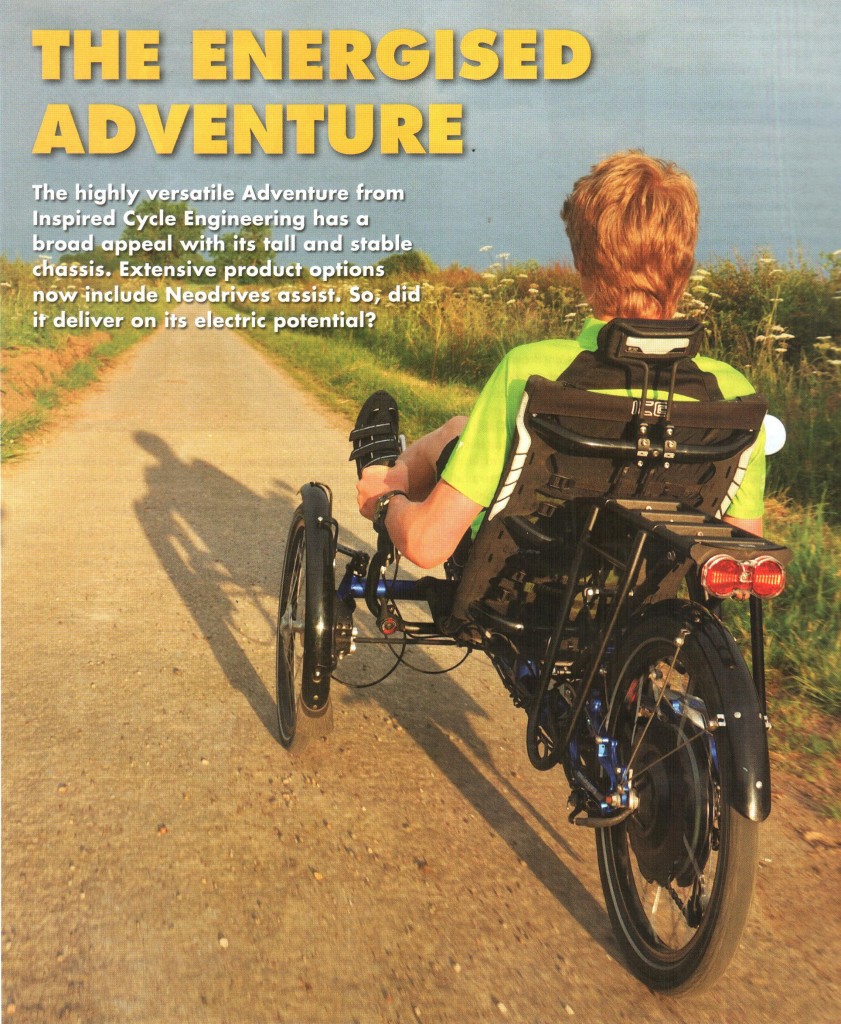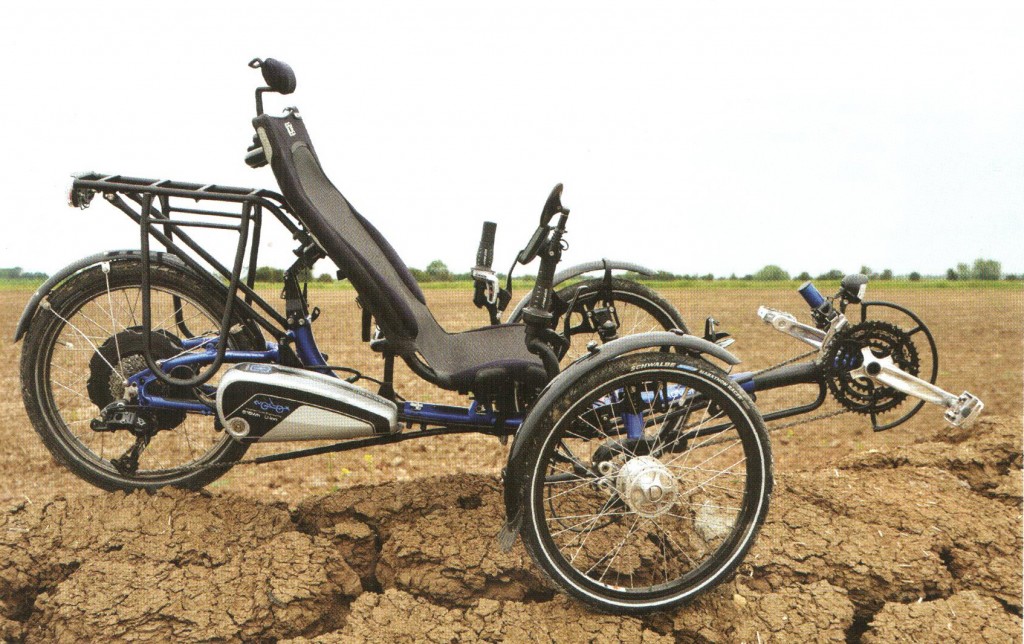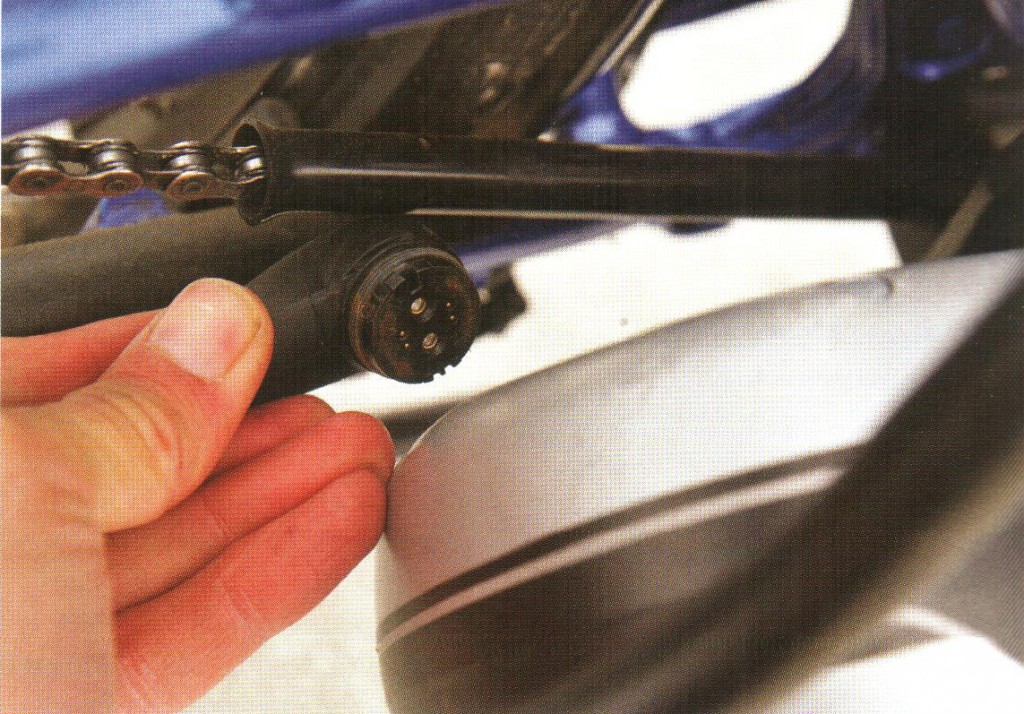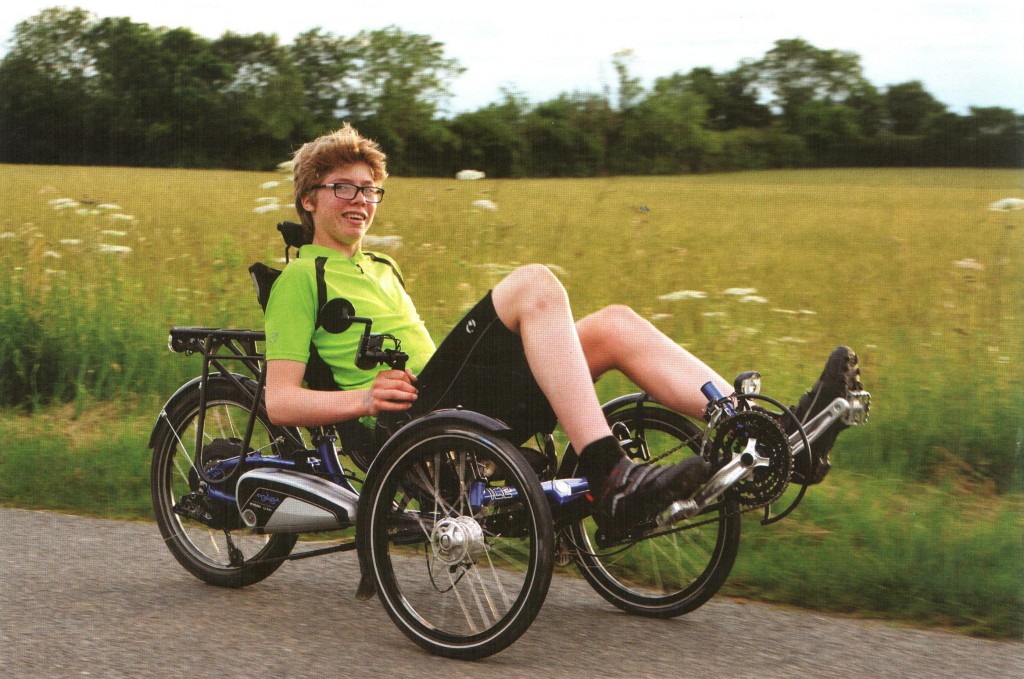Die VeloVision ISSUE 50 vom Februar 2016 berichtet über den Elektroantrieb Neodrives
Howard Yeomans, Herausgeber des englsichen Liegeradmagazins VeloVision, hat für die aktuelle Ausgabe ein ICE Adventure mit Neodrives Elektroantrieb ausgiebeig getestet.
Wir freuen uns über die Publikation und gerne stellen wir den Erfahrungsbericht unseren Kunden zur Verfügeung.
Der Bereicht ist in englischer Sprache. Für alle Liegerad- und Dreiradfans, die gerne englische Texte lesen ist die VeloVision eine Bereicherung und bietet einen spannenden Blick auf die Fahrradwelt. Aktuelles gibts auch auf VeloVision Facebook.
Viel Spaß bei der Lektüre!
PS:
In unserer aktuellen Ausführung, ist das aktuelle Akkugehäuse schwarz und zwischenzeitlich gibt es das neue Display sMMI Connect von Neodrives mit bluetooth Anbindung an das Smartphone.

VeloVision ISSUE 50 Februar 2016

ICE Advemture mit Neodrives Elektroantrieb im Test
BACKGROUND
Way back in Issue 37, we reviewed the ICE Adventure, when it was newly released in 2010. Back then, it represented the first of a new wave of full-suspension machines, soon to become widespread in the touring and comfort sector of the trike market. The Cornish trike manufacturer, ICE Trikes, as they are now popularly known, has now officially taken a step towards electric-assist, following, what they report as, a large number of requests for the option to be made available on new machines.
Icletta, the ICE distributor in Germany, was the first to offer the package on Adventure
models to their home market, having themselves assisted in the integration and test of the Neodrives hardware, which also happens to be manufactured in Germany. For ICE, this offered a low-risk route to a reliable integration, matching an experienced dealer with a new player in the e-bike technology sector. To be clear, Alber, the maker of the hub, is a well-established manufacturer of medical technology; Neodrives is a
cycling variant of their kit for electric mobility equipment.
Fully equipped Adventure trikes have been returning to the UK market for some months now, so when I saw an early example at the York Rally, I snapped up the offer to borrow it for a week. This is a review specifically focused on the integration of the Neodrives electric-assist package. For the full review of the ICE Adventure, refer to Issue 37,
now available as a free download at velovisionxom/free.
FIRST IMPRESSIONS Our test trike was one of the few Neodrives demonstrators in the UK and happened to be a standard, yet impressive, Adventure with full suspension, a 20″ rear wheel, finished with mudguards and rack.
The first job for me was to get the trike out of my hired van, which I’d normally do with two hands — one on the cruciform and one on the seat rail, but this trike was heavier than it looked. Being a careful sort, I actually rolled the trike down three hastily laid wooden planks — a wise move.
I estimate the totalweight ‘penalty’ of the Neodrives is something around the 8 kg (18 lb) mark, which wouldn’t normally present a problem unless you are frequently lifting the
machine, or riding it unassisted.
The extra weight is located inside and around the rear wheel, which is especially noticeable when lifting the rear end to manoeuvre the trike, as one may require for 180° turns. The measured weight of our model was 31.3 kg (69 lb), but, once onboard, that figure is largely irrelevant with approximately 250 W (650 W peak) at the rear wheel.
Visually, there’s no getting away from the impact of the huge rear hub, although the ‘streamlined’ 17 Ah / 612 Wh battery pack, containing Panasonic’s LiNiMnCo flavour of
lithium cells, is fairly unobtrusive.
In fact, the battery is well-hidden behind a pair of Radical Design ‘throw-over’ panniers. The hugely dominant Neodrives hub connects to an up-rated rim with stubby ‘one-
cross’, heavy gauge spokes, a setup that will undoubtedly manage the torque without appreciable wind-up. importantly, the battery is very firmly fixed to a sturdy quick-release mounting, which itself is fixed to the suspended frame — a safe location
with minimal physical shock.

Elektroantrieb Neodrives Display am Liegedreirad ICE Adventure
Estimated range reduces with higher assistance levels (level ‘I and 5 in ECO mode shown).
CONTROL
The Neodrives head-unit is fitted to the trike with a twist-lock and, close to the right hand, is a row of three buttons for controlling the entire system. Everything is
powered-up at once with along push on the middle button. It is not necessary to separately power-down or disconnect the battery when parked-up, although it has
its own soft-button, which we never felt necessary to use. The two other buttons on the handlebar with up and down arrows are for menu control and, while riding, for adjusting the assistance level. Our system was configured for right-hand use, with the display and
buttons on the same side as the rear-view mirror, but it could be switched to the left side. Either way, the buttons are ideally situated for easy thumb control, but with no chance of accidentally pressing buttons.
This being a pedelec, electrical power is applied in proportion to the pedalling force detected by the torque sensor in the rear hub; many riders will simply preset the assistance level then leave the unit alone. However, I discovered there are times when adjusting the assistance and braking is advantageous. The system is very configurable, with three assistance modes (Eco, Norm, and Boost) and five levels of assistance within each mode, plus two ‘backwards levels’ for regeneration (regen), which are useful for absorbing power instead of braking excessively. The display indicates the estimated range for all of the 15 combinations, which looked fairly accurate to me after many miles of test rides. The maximum range with a full battery on lowest assistance in Eco was
74 miles (units can be displayed in metric or imperial) and the minimum with a full battery was 19 miles in Boost, level 5.
After all the button pushing, I hadn’t turned a pedal and it was now distinctly dark, so I needed to turn on the lights. A Busch & Muller Lyt, at the front, and the rear Toplight
Flat S Plus are both wired into the system, which I later realised can be used as a dynamo for the lights when the battery is manually turned off or disconnected. However, with a charged battery fitted, they run from battery power, in which case the lights are turned on via a menu option on the display. Incidentally, the display has a backlit colour LCD screen (not touch sensitive) and is highly visible in low light. It was not so easy, however, to see in the bright sun. So, with the lights finally turned on, I took the first ride.

Battery is mounted as low as possible and out of harm’s way. A second battery can also be added. Removal is a one-key operation, but charging is possible in-situ.
THE RIDE
I was surprised how fast the trike shifted from the starter’s blocks — the initial torque from a standing start was nothing but impressive, no matter what mode or level selected. The weight on the rear wheel, with its Schwalbe Marathon tyre, gave it good traction in most conditions. Starting off on the flat on an unloaded trike, the assistance
often seemed overly powerful, but only when I tried pedalling hard.
The delivery is predictable and controllable, and I needed to relearn that an energetic take-off was a waste of battery energy more than my own — such effort best saved for
steep uphill starts.
Without making radical adjustments to my riding style, I found the surge of initial power
could easily be dampened by knocking back the assistance level a few bars with the ‘down arrow’.
When I got stranded a few times, coming to a stop in too high a gear, I simply increased it again before setting off for an easy getaway.
Some riders may find it especially reassuring to know the power is available when required.
Once rolling along, the sensation was much like an invisible hand pushing the trike along firmly at all speeds approaching the 15.5 mph (25 km/h) assisted limit, where the
power seemed to gently, but politely, reduce to nothing, according to the law for assisted cycles. For all speeds above the speed threshold, the trike rode normally and quietly, too. In fact, the trike and its direct drive motor emit very little noise, except
for the slightest “zizz” when pulling maximum torque at low speed.
Start-stop riding was fun for a while, but I soon realised that bumping up against the speed threshold was proving little and I would need some sort of hill to test the full scope of the motor and all the assistance levels.
I have a nearby 5% incline, on which I intended to repeatedly ride uphill under power and use all the regen settings on the way down. It was here, during multiple hill-starts, that I could really appreciate the difference between all 15 combinations of assistance — put simply, each mode (Eco, Norm or Boost) enforces a different maximum power, and each level of assistance within the mode represents a different ratio between electrical assistance and the rider’s physical effort. The options available should suit every rider in almost every scenario; when you need the motor to do a larger share
of the work, go for the higher level (in any mode) with a quick stab at the arrow buttons. When you need to conserve battery, choose Eco, which should minimise battery-draining high current take-offs, and, ideally, a low assistance level. For maximum
available power, choose Boost, obviously.
Now, just when you thought this was a ‘fit and forget’ system, there are the two levels of regeneration, plus the downhill-assist setting to consider (or not, depending on how
interested you are in exploring all the functions). I thought of regen as an electrical brake, which I applied manually whenever I wanted to coas more slowly downhill. To use regen, you need to push the ‘down-arrow’ until the graphic indicator shows
either of two negative positions.
The strength of regen is the same, regardless of the mode you happen to be in, and, when used in the strongest setting, it held my speed down at about I2 — 15 mph on the
5% decline. When the descent was over, regen needed to be removed by increasing the assistance level, otherwise the rider is actually charging the Neodrives by pedalling;
a symbol on the screen actually indicates when this is happening!
I found the regen to be a useful and easy-to-use function, even on moderately short descents.
Ride much beyond about 15 mph, however, and the system will not activate, presumably to protect the battery, so it needs to be applied early. In the weaker of the two settings, regen was less able to control my speed and the trike could run away beyond the upper speed threshold. When I applied the mechanical brake, I could usually get the regen to start working again.
Consider also, I was riding unladen, so all-up the weight was only about 95 kg (210 lb) and I expect that the rider of a fully-laden trike may find the limitations of regen.
Brake-assist is the automatic version of regen, selected via the easy-to-use menu system. While riding, it cuts in automatically at a preset speed (select anything from
6 to 17 mph) after coasting for a short time, roughly one second.
The feeling is a bit like the overrun from a car engine, but I was never quite sure when it would kick in.
Sometimes I was coasting for some while before it started and, at some low speeds (within the allowed speed range), it never cut in at all.
When it was working, however, it felt about as strong as regen level 1, and continued down to about walking speed, unless a push on the cranks cancelled it. For me, brake-
assist was at best usable, although, potentially, would be of more benefit in undulating and technical riding conditions, adding small amounts of charge to the battery instead of heat to the brakes.

Magnetic connector is keyed to fit with correct polarity.
CONCLUSIONS
The combination of rugged multi-terrain trike with powerful assistance was for us, at first, a bit of a novelty, but, later, the real advantage of the extra power was
revealed to us. Various applications became appealing: for example, pulling a BOB trailer up a nagging gradient into wind became almost too easy; in fact, we started to
ignore wind direction entirely as headwinds were oflittle concern.
Also, a favourite episode was a ride down a two-mile bridleway, a route of mainly dried mud and grass, something that would’ normally be an uncomfortable 30 minutes on any
machine. Surprisingly enjoyable, the Neodrives gave the speed required to explore the full benefit of suspension — the trike appeared to float over bumps, maintaining a satisfyingly high pace.
Build-quality of the system was generally excellent and looked to be t ICE ADVENTURE + NE sealed very well against the elements — in particular, the magnetic battery
connector, which will see very regular use for charging. We found the controls easy to get to grips with and the operation of the system made minimal demands on the
rider, causing a secondary effect — that of having all decision-making lifted from the mind.
Our system was running a beta version of firmware, so the wrinkles in functionality already mentioned should be ironed out in production versions (systems in use may well accept an upgrade). See what you think; a test ride will always be on offer at any ICE dealer. To borrow a line from a large German auto manufacturer, Power is nothing,
without Control, and add to that, the potentially very large range capability and we have a long- , distance system that elegantly and almost seamlessly integrates human
and electrical power.

AVAILABILITY
The Neodrives is available as an option on all Adventure and Sprint models, currently only available in the EU, and only when ordering a new trike — the only exception being
a factory retrofit at ICE (Cornwall, UK) or their authorised distributor in Germany, Icletta. A two-year guarantee applies specifically to the system and one-year for the battery. New trikes are also covered by a limited ten-year guarantee.
ICE recommends buying trikes and accessories via their extensive worldwide dealer network, see www.icetrikes.c0/dealers, and only directly from ICE where local dealers
are not available. The UK RRP for the Neodrives option, when sold with a new trike, is from 21878.27 inc. VAT and the retrofit is from £1945.9O inc VAT.
Howard Yeomans

